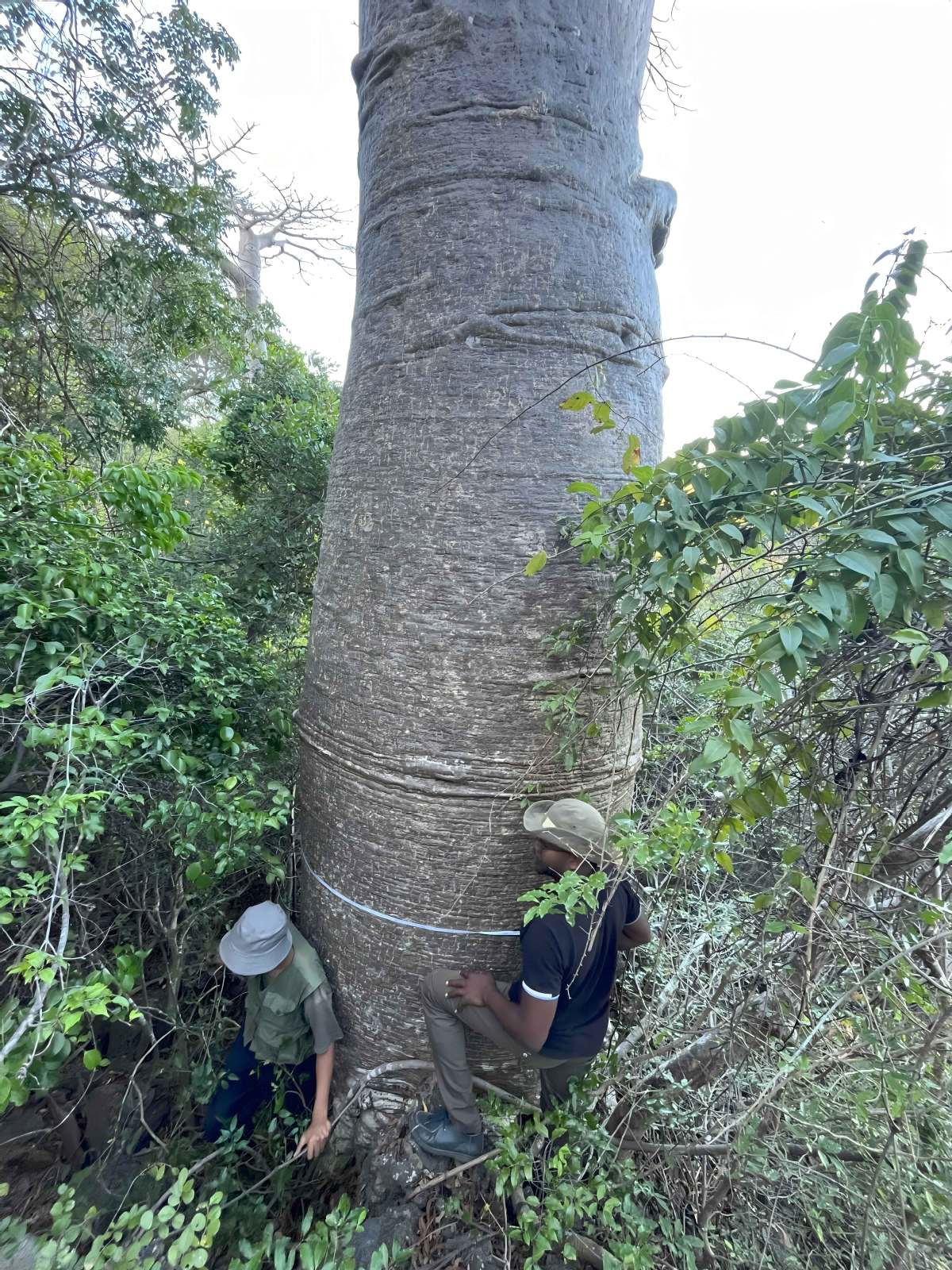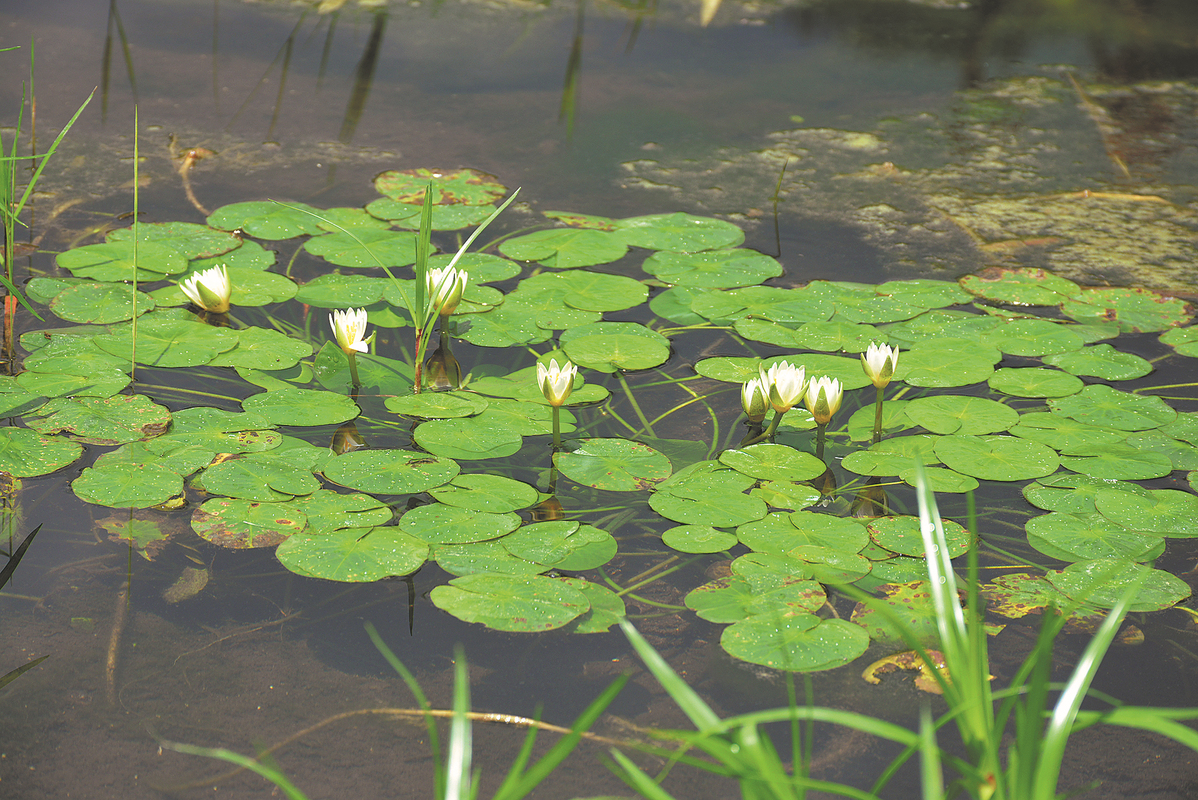China Daily: Chinese Botanists Protect Plants in Africa
2024-12-02
Research reveals intricate web of factors that govern diverse habitats and living conditions of endangered species
While the majority of Chinese botanists have directed their research efforts toward studying the rich flora of China, a select few have ventured into the unexplored realms of African flora. Wang Shengwei stands out as one of these explorers.

Wang Shengwei checks the health status of a baobab tree with a local collaborator during a field survey in Madagascar. CHINA DAILY
Since embarking on his doctoral studies at the Wuhan Botanical Garden of the Chinese Academy of Sciences in 2017, Wang has delved deep into the intricate tapestry of African plant diversity and distribution. His doctoral thesis focuses on the plant diversity and conservation of tropical East Africa.
Over the years, the 35-year-old has traveled to African countries such as Madagascar, Kenya, Ethiopia, Rwanda and Zimbabwe many times. Collaborating with local universities and research institutes, he has participated in joint expeditions spanning more than 300 days in Africa.
After completing his PhD, Wang began working at the Wuhan Botanical Garden in 2021, where he contributes to the plant diversity and evolution research group.
With his research endeavors primarily anchored within the framework of the academy's Sino-Africa Joint Research Center, the first center of its kind in Africa.
The center is a hub of Sino-Africa collaboration on biodiversity-related research and also focuses on areas such as wildlife protection, the prevention and treatment of desertification, climate change monitoring and modern agriculture demonstration.
"My research focuses on plant diversity and conservation in East Africa, specifically trying to figure out how many plant species there are, their unique distributions and why they are distributed there," Wang told China Daily.
"We pay special attention to the distribution and protection of flagship species such as endangered and endemic plants."
Because of his work, he and his colleagues can solve questions surrounding the distribution of baobab trees in Africa and shed light on the intricate web of factors that govern the habitats of these iconic trees.

Wang measures an endemic plant during a survey in Kenya, with several Kenyan colleagues.
Endangered giant trees
The baobab tree, often referred to as the "tree of life" in Africa, is revered for its multifaceted utility. Its fruits are edible, and its massive trunks store water, serving as a vital resource for nearby communities and wildlife during dry seasons.
Baobab trees encompass eight globally recognized species within the Adansonia genus, seven primarily found in Africa and one in Australia. Wang's fieldwork in Madagascar has revealed the diverse habitats where baobab trees thrive.
"Before I visited Madagascar, I thought baobab trees only lived in the drier regions of Africa," he said. "But in Madagascar, I saw different species of baobab trees, living in diverse habitats. For example, in northern Madagascar, there are many baobab trees growing in forests. They are called the 'mothers of the forest' by the locals."
They can also grow in villages and cities, he added.
During their field surveys, Wang and his colleagues encountered three endangered species within the baobab genus. Of particular concern was Adansonia perrieri, with fewer than 200 individuals remaining in the northernmost region of Madagascar. Classified as critically endangered, these trees face the looming threat of extinction in the wild.
While Adansonia suarezensis is distributed over even smaller areas compared to Adansonia perrieri, the former is only classified as endangered due to its bigger population size.
Adansonia grandidier, despite its frequent appearance in photographs showcasing Madagascar's baobab trees, is also categorized as endangered due to its restricted distribution in western Madagascar.
As Wang and his colleagues conducted their survey and collected samples in the wild, they came to the profound realization that the endangered status of many baobab species may have been underestimated.
Upon returning to their laboratory, Wang and his colleagues started a series of experiments and data analyses. By integrating genomics and ecological data in a comprehensive manner, they reconstructed the global evolutionary history of baobab trees.
Their research revealed findings regarding the population dynamics and habitat adaptability of the trees over the past million years. They observed a pattern of population increase followed by decline, with the three endangered species experiencing more rapid declines. Among the species studied, Adansonia za demonstrated a remarkable ability to adapt to various habitats, while other species had more restricted and smaller ranges.
These discoveries prompted a reassessment of the conservation status of Adansonia suarezensis, leading the researchers to recommend upgrading its classification to critically endangered. Their research was published in an article titled "The Rise of Baobab Trees in Madagascar" in the journal Nature in May.
After the publication of the article, Wang said, their work will expand to conservation of baobab trees in Madagascar. They carried out health checks on some of the older baobab trees and encouraged local villagers to collect the plants' seeds, cultivate saplings and plant them in their natural habitats.
"At a village in northern Madagascar, I purchased 20 baobab tree saplings and became the villagers' first customer," Wang said. "Then I donated the saplings to the University of Antananarivo in the country's capital. They are now growing on the campus of the university."

The endangered baobab trees, Adansonia suarezensis, dominate a slope in Madagascar. CHINA DAILY
Finding new populations
Wang's research work also led him and his colleagues to Rwanda, where they gained a deeper understanding of dwarf Rwandan water lily (Nymphaea thermarum), the world's smallest water lily species once thought to be extinct in the wild.
Nymphaea thermarum was discovered in 1987 by German botanist Eberhard Fischer. The epithet thermarum refers to the hot spring and temperature that provided its native habitat.
The plant's native habitat was damp mud formed by the overflow of a freshwater hot spring in Mashyuza, southwestern Rwanda. Unfortunately, due to residents clearing the spring's river to cultivate farmland, the habitat disappeared, leading to the extinction of the plant population.
The last recorded photograph of the plant was in 2005, and by 2008 the species was officially declared extinct in the wild.
Fortunately, Fischer had foreseen the risk of extinction for this species. He took prompt action by transferring seeds and some plant specimens to the Botanical Garden in Bonn, Germany, for preservation. Later the Bonn Botanical Garden shared these resources with the Royal Botanic Gardens in Kew in the United Kingdom for ex-situ conservation.
In 2009, Kew successfully propagated a batch of dwarf water lilies from the seeds, indicating that although the species had gone extinct in the wild, it had not completely disappeared as it continued to thrive in botanical gardens and laboratories.
In July last year, an exciting piece of news spread throughout the scientific community when botanist Thomas Abeli rediscovered this rare water lily in northwestern Rwanda.
The discovery surprised Wang and his colleagues, igniting a strong desire to conduct further research. Fortunately, they had a joint field biodiversity survey with the University of Rwanda scheduled for November 2023, providing them with the opportunity to look for the water lily.
Where did Abeli find the first population? Surprisingly, Wang said, it was next to a pathway in a village, with mango trees on one side and fields growing bananas and pineapples on the other.
The second population discovered by Abeli was even more miraculous -it was in a fishpond. The water lilies in this pond were abundant, with larger plant specimens and larger flowers.

Dwarf Rwandan water lilies (Nymphaea thermarum) bloom in a pond in Rwanda. CHINA DAILY
After finding the two populations, Wang's colleague, Wei Neng, pointed out that there were likely other populations nearby. As a result, they centered their search around the two populations discovered by Abeli and conducted a systematic search within a few kilometers of the area.
Fortunately, they did discover new populations.
The first location, two to three kilometers from Abeli's sites, was a small ravine between some rice fields and an area where local farmers planned to grow medicinal herbs. They noticed that the population was not large, with only about a dozen plants. Then, they saw a hot spring waterfall nearby, with water temperatures exceeding 40 ℃.
The discovery of the second population left them astonished. In the middle of a cornfield pathway, they observed thousands of the water lilies densely growing.
"It was Nov 20, a day I will never forget. I and Dr. Wei Neng were fortunate to witness plants that we had only seen in documentaries and books before. What was even more exciting was that we discovered entirely new populations of the plant."
They talked with the locals. Some elderly villagers aged over 60 told them that the plant had always been present in the areas where they grazed sheep during their childhood. "So, why was there talk of extinction before?" Wang said. "The reason is simple: our botanical surveys were not thorough enough, and we did not venture into this particular region. This has provided us with valuable insights. When determining whether a species is extinct or assessing its endangered status, we must exercise caution and refrain from rushing to conclusions."
However, the conservation work for the dwarf Rwandan water lily has only just begun. Many questions regarding this species remain unanswered, Wang said, such as what its life cycle entails.
"Most of the information currently available is derived from preserved samples in Kew Gardens or other botanical gardens, rather than observations from wild populations, making it not entirely accurate," he said.
"Also, we need to accurately describe its morphological characteristics, study its genetic diversity, determine its position in the evolutionary process, and understand how it adapts to the hot spring environment. These questions all require further research and resolution."
Currently, less than 60 percent of African plants have been assessed and classified for their endangered status by the International Union for Conservation of Nature, indicating that a large number of plant species have yet to be evaluated.
"So we still have a lot of work to do," Wang said. "The work we are conducting in Africa is a reflection of our response to the global call for biodiversity conservation." (CHINA DAILY)